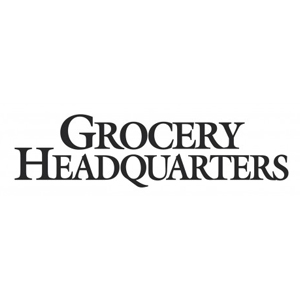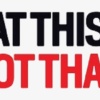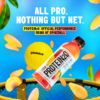Consumer interest in bottled water continues to rise, and the end is nowhere in sight.
Three decades ago, not only did the bottled water category essentially not exist, but was scorned as a non-starter by the few people who knew about it. After all, what consumer would be foolish enough to purchase a product that he or she could get just by turning on the kitchen faucet?
Today, this category is on the verge of overtaking carbonated beverages as the largest beverage segment in unit sales. In fact, many industry observers predict that it will continue to grow by leaps and bounds as more varieties of bottled water hit the marketplace and consumers seek more ways to obtain safe, healthy and clean drinking water.
According to Chicago-based IRI, the bottled water category grew by an impressive 8.2 percent in dollars and nearly 6.5 percent in units over the 52-week period ended Oct. 30. Total dollar sales for the category in retail outlets, which includes supermarkets, drug stores, mass merchandisers and convenience stores, totaled about $14.7 billion, while unit sales totaled about 7.56 billion.
“When I first got into this business I would not even consider putting bottled water on my store shelves,” says one retail official old enough to remember the start of the category in the mid to late 1980s. “Who would have thought that it would have developed into this type of category, one where there are just so many different options?”
Well, that is the point of this category. Bottled water is not just about simple H2O anymore. Not even close. Today there are all types of waters on retail shelves, ranging from premium, like Evian to private label brands like Ice River Spring Water; vitamin and oxygen-infused brands; sparkling items; flavored brands; and products that focus on kids or athletes. Now there are even companies offering product in non-traditional packaging, including paper cartons, to catch the consumer’s eye. The bottom line is that this is not your mom’s bottled water category anymore. In fact, it may never have been.
“There is a market out there for everyone in this growing segment,” says Kevin Sherman, president and CEO of Irvine, Calif.-based TrueDrinks. “The key is having the right product with the right ingredients and merchandising it properly to the correct audience.”
The enthusiasm for the category is being felt virtually everywhere. Suppliers, sensing consumer interest and demand, are rapidly introducing brands and varieties to capture as much attention as possible. Retailers are making room in their beverage section for more and more bottled water products, often at the expense of the beleaguered carbonated beverage segment.
“It has been a remarkable ride,” says Tom Hipwell, vice president of business development for Stamford, Conn.-based Nestlé Waters North America. “From 2000 to today the category has grown by more than 120 percent. That growth has come because consumers see water as a product that offers health and wellness.”
Manufacturers, big and small, are almost giddy about the potential. “Collectively, the still and premium water categories have the highest dollar growth of any beverage category,” says Scott Wiley, senior manager, category insights for water, tea and coffee for The Coca-Cola Co., based in Atlanta. “The overall category has grown significantly in dollar sales in the last year alone, with demand being driven by Millennials and multicultural consumers.”
Robert Kral, vice president of marketing and procurement for Protein2o, based in Des Plaines, Ill., shares a similar view. “The enhanced water category is poised for strong, continued growth in 2017, fueled by the expanding segment of mainstream health conscious consumers seeking functional, low-calorie hydration,” he says. “Health and wellness awareness is a trend that has significantly impacted the beverage category and it will continue to do so for the foreseeable future.”
However, the growth of the category is proving to be a nightmare for retailers faced with space constraints and the fact that they have used bottled water as a loss leader for decades. Now, many want to make money off of the category and are speaking up, asking their suppliers for help.
Bottled water manufacturers say they are doing their part and are asking retailers to think outside the box. Traditional waters do fine, but it is the new and unique items that are catching the consumer’s eye and also present a better option for retailers to earn more profits, they say.
“It is clear to us that consumers have been and will continue to increasingly shift their focus to better-for-you brands that can effectively communicate a story about their purpose or the functionality of their ingredients,” says Kral. “The increased focus on health and wellness has caused consumers to make new choices about the beverages they consume, replacing bad-for-you beverages with better-for-you choices, and retailers have the opportunity to expand these options with new, innovative beverages that excite consumers.”
So companies like Nestlé Waters, the leader in this category with more than a dozen different regional brands and a few national ones, and Coca-Cola, with its Dasani brand, are offering as many products as possible to please consumers.
“Knowing the appeal and importance of water and stills for our retail customers, we offer a wide range of beverage options in the category that includes traditional and expanded product offerings, new research and insights with real tactics that retailers can use to better merchandise their store,” says Wiley.
Officials at both companies stress that consumer tastes are shifting within the category. Nestlé Waters has a unique strategy of offering regional brands such as Deer Park, Poland Springs and Zephyrhills, because Hipwell says that consumers like to purchase locally-sourced products. Yet the company is starting to push flavored versions of these waters as well as its sparkling brands, which include Perrier and S.Pellegrino. Nestlé’s fast-growing filter water brand, PureLife, is a national brand.
“Retailers are relishing these trends,” says Hipwell. “There is a lot more opportunity to make money off of the bottled water category with all of these choices now. And consumers want the opportunity to drink water for its health and wellness benefits.”
At Coca-Cola, the company is pushing Dasani, its national water brand, and Smartwater, while also starting to put more muscle behind its sparkling waters. “We know that consumers demand a wide array of water products ranging from still to sparkling, which is why we offer a variety of choices for consumers,” says Wiley. “Dasani is ranked as the top national base water brand in terms of quality and taste by consumers. In addition to still water brands, we offer a range of sparkling water products. Sparkling water accounts for 23 percent of the water segment dollar mix, contributing 35 percent of dollar growth in the same timeframe. Sparkling water has solid growth throughout all regions in the U.S. and is projected to continue double-digit growth into 2017.”
Coca-Cola offers Dasani Sparkling in flavors like lemon, lime and raspberry lemonade. Additionally, the company has added products like smartwater sparkling.
Private Profits
The other interesting part of this equation is the growth of private label brands. Seeing the opportunity to make more money from the bottled water segment, many retailers started to carry store brands in their bottled water section about 10 to 15 years ago. “I think private label helped many retailers decide to expand their bottled water section because it made the category more profitable,” says Hipwell. “That also opened up more space for the national brands. Now many retailers offer a mix of both, which creates better margins and makes the category even more attractive.”
Of course, creating a differential between private label brands is tough in the bottled water category. Most claim that they offer quality sourcing for their products. Others, such as fast-growing Ice River Springs, push the fact that their packaging is unique. “What makes us stand out from other private label manufacturers in the bottled water category is the fact that we are the only bottler with a plastics recycling operation that produces 100 percent recycled bottles,” says James Gott, president of the Shelburne, Ont., Canada-based company, which also produces its branded Ice River bottled water products. “We need to share this story with consumers. So far it has made a big difference with those consumers who are environmentally conscious and we have gotten a lot of traction from it.”
So how do retailers keep up with this burgeoning category? Hipwell says that the category has gotten more room from retailers in recent years, but it may need even more as consumers switch away from carbonated, sugar-based beverages. Wiley adds that retailers may want to look around the store for secondary locations. “Proper location is key for beverages, so retailers should prioritize beverage location when planning store displays and endcaps,” he notes. “For water displays, our research shows that it is a good idea to remind shoppers to buy water after the primary aisle. In fact, water displays located after the primary aisle on a primary shopper path tend to better engage shoppers, leading to more water sales overall.”
Wiley and others say that retailers should consider secondary locations that make sense. “The produce area offers a greater opportunity for merchandising,” he adds. “In a 2015 grocery study, water displays located in the back right of the store drove higher exposure, engagement and conversion rates than any other location. People tend to seek an unflavored sparkling water to complement a meal or snack. Creating occasion-based merchandising solutions that pair these products with complementary snacks can increase basket sizes and help increase profits for retailers.”
In the end, most industry officials say the future of the bottled water category rests on the willingness of retailers to give the section more space and more visibility as consumer tastes change. “We believe consumers will increasingly shift toward low-calorie functional beverages as a guilt-free snack with highly desirable functional benefits,” says Kral. “Non-healthy beverages will continue to lose market share to brands that can deliver true functionality, quality ingredients and fewer calories and sugar.”
High-end H2o
While private label sales are skyrocketing in the bottled water category, industry observers say the real action is on the other side of the market, where brands like Evian, Perrier and Voss are fighting for market share, while making a solid case to retailers that they can produce healthy profits.
Evian and Perrier are the two big names in the premium end of the bottled water market, each using their strong brand name recognition and distribution abilities to gain access to many retail shelves. Others, including Voss, a Norwegian-sourced brand, Fiji Water and Icelandic Glacier, are making inroads as consumers seek alternative products and retailers are expanding the size of the premium segment of the section.
“Evian and Perrier started this craze decades ago and they remain the stalwarts of this end of the business,” says one observer. “It just makes sense that other companies are trying to grab a foothold in that part of the market. A lot of consumers are willing to pay more for a product that they perceive as a higher grade.”
Packaging seems to play a big role in consumers’ decisions. While Evian and Perrier have stayed with the same packaging over the years, content that consumers identify with their brands, others have tried their own style of sophistication to win shoppers over.
Some retailers, meanwhile, seem concerned that too many products are flooding the premium end of the market. “We have our favorites already and do not really need anymore products at the top of the market,” says one East Coast retailer. “But they just keep coming along.”
Nestlé Waters North America, based in Stamford, Conn., which manufactures Perrier, is introducing flavors to the line, hoping that it will attract more consumers to the brand.
Fresh Water
A host of companies are looking to make a dent in the burgeoning bottled water segment. Many are simply looking for the niche in the marketplace. Take Boxed Water, a Grand Rapids, Mich.-based company that offers a quality water product in a—well, a box. Company officials say that the packaging is not only easier for consumers to use but better for the environment and easier to fit on retail shelves.
“We want to get the sustainability message out to consumers and to retailers,” says Matt DeWitte, vice president of marketing for the company. “We see a lot of growth in the alternative carton part of this category because a lot of consumers are looking for ways to use less plastic. When they see our product on retail shelves, many will see how it makes so much more sense from a sustainability point of view.”
Boxed Water was founded by Ben Gott in 2009 after he saw the amount of plastic being used in a warehouse he worked in. “He realized that there had to be a better way and a more sustainable way,” DeWitte says. “The majority of our packaging comes from paper.”
Building awareness of the brand is DeWitte’s next mission. Boxed Water has a number of merchandise racks and shelf talkers for retailers to capture consumer attention. Plus the company is launching a national campaign this year to help replant trees in exchange for social media posts. DeWitte says the goal is to plant one million trees by 2020.
Protein2o is another unique product. Robert Kral, vice president of marketing and procurement for the company, says the product is the original low-calorie protein water created as a better-for-you refreshment alternative to protein shakes. With 15-grams of whey protein isolate in each bottle, Protein2o provides 30 percent of the daily value of protein, using only the highest quality ingredients, he notes.
“This spring we launched our revamped product line that included a packaging refresh and reformulation to 100 percent whey protein isolate,” Kral says. “Whey protein isolate is known as the gold standard of protein because it offers maximum functional benefits while remaining lactose-free and low in calories. As part of this revamp, we also removed all preservatives and we’ve introduced a fifth flavor to our lineup, Tropical Coconut, a creamy blend of natural coconut and pineapple flavors.”
TrueDrinks is focusing on kids and their moms to build sales. The company’s AquaBall! line of naturally flavored drinks features four flavors (fruit punch, strawberry lemonade, grape and berry) and comes packaged with characters from Marvel and Disney products. The key, according to Sherman, is the health benefits of the product.
“We have formulated a lot of products that have zero sugar and zero calories that satisfy the needs of moms,” he says. “Plus it is a great tasting product that kids want, with packaging of characters they can relate to. There are 144 million people in this country who are either diabetic or pre-diabetic and the numbers are growing. We are doing our part to slow this down. AquaBall! offers a healthy alternative to moms and a great-tasting product to kids.”
Sherman says that retailers need to let consumers know that there is a sugar-free alternative out there that is focused on kids. “Consumers are buying water for adults, we offer a product in AquaBall! that is for kids, with great packaging and great flavor and moms can be comfortable giving to them.”
Oxigen, from Vancouver, B.C., Canada-based Formula for Beverages, is trying to generate consumer interest in products that can be refreshing and provide a faster recovery from exercise. The company offers two SKUs, a 20-ounce bottle and a .5-ounce shot and is looking to go national this year. A 1-liter bottle will be introduced later this year.
“There is a consumer trend toward more functional products,” says Blair Bentham, the company’s CEO. “We did a study with Indiana State University in 2015 that showed that athletes recover twice as fast when they drink Oxigen. That is our sweet spot. We have a product that does something. It is the real McCoy.”
Bentham adds that Oxigen is premium-priced, giving retailers more margins but still having the ability to turn at a good rate.




